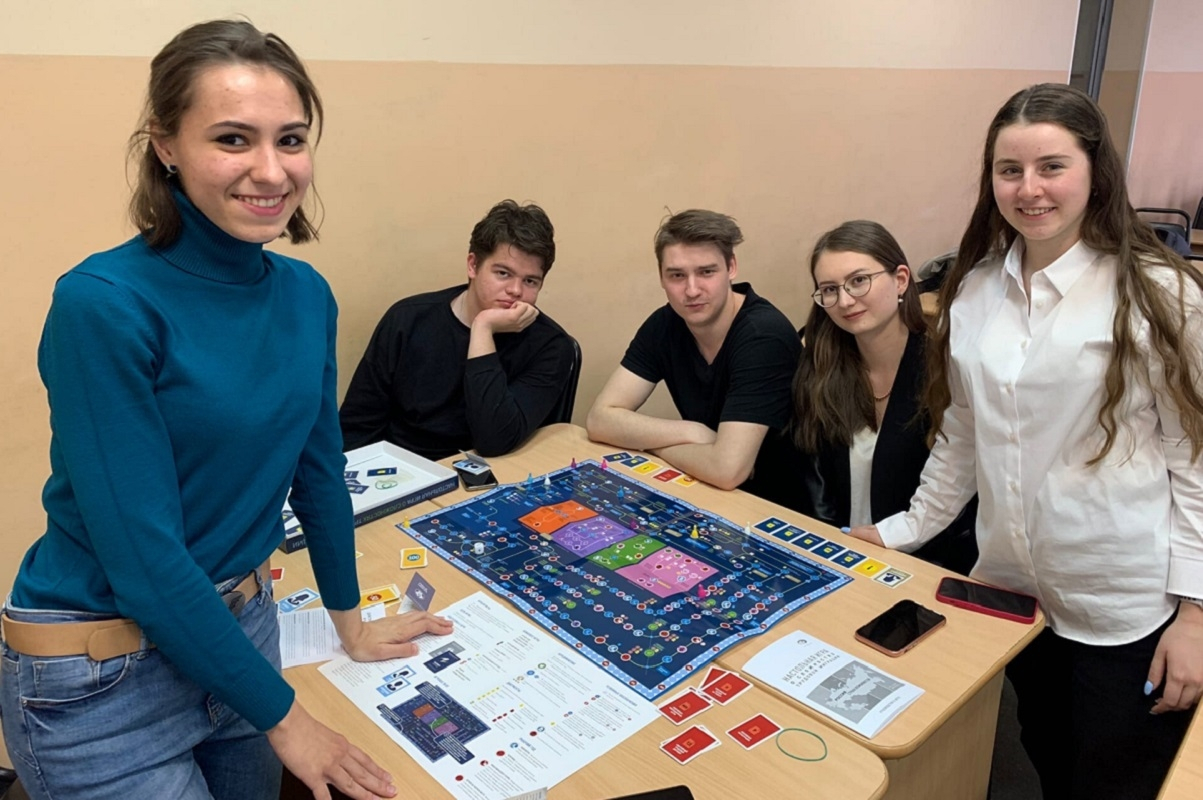Myths about migrants disproved at St Petersburg University
A lecture and a law game focused on the problems of labour migration in Russia have been held at the meeting of the Students’ Labour Law Club of St Petersburg University. The meeting has been attended by Andrey Yakimov, an expert on migrants’ and ethnic minorities’ issues from the charitable foundation for support and development of social and educational projects PSP-Fund.
According to Mr Yakimov, regardless of the purpose of their arrival, migrants usually face negative attitudes from Russian citizens: ‘The most common stereotypes about migration include: migration processes are uncontrolled; there are many illegal migrants, with a high level of criminalisation among them; the country has no need for migrant workers; they spread diseases and take our jobs and places in kindergartens and schools.’
The experts explain that stereotypes about migrants are very far from the reality. Thus, if migrants have problems with documents, they are not allowed to enter the country; hence, illegal entry into Russia is practically impossible. As for overstaying in the country with expired documents, out of 13.5 million foreign nationals who entered Russia in 2021, 180,000 migrants were denied entry due to expired documents and illegal labour activity.
According to statistics, at the beginning of 2021, in Russia, there were about 5.7 million registered migrants. Most of them came to work, others to study or travel. There is also forced migration — this term refers to refugees or persons who want to receive temporary asylum. Another category of migrants is "highly qualified specialists" — these are people who have received an invitation to work in Russian companies. Most of migrants in Russia are citizens of: Uzbekistan; Tajikistan; China; Ukraine; Kyrgyzstan; Kazakhstan; Armenia; and the Republic of Belarus.
According to the Prosecutor General’s Office, in 2021, about two million crimes were committed in Russia, of which about 36,000 were committed by foreign citizens, that is, no more than 2%.
Furthermore, according to various estimates, up to 25% of Russia’s GDP is generated by migrants. Thus, in order to have the right to work in Russia legally, a foreign worker under a work patent must pay monthly contributions to the budget of the federal subject, where he or she works. In 2019, the subjects of the Russian Federation generated 52 billion roubles of revenue from selling work patents.
Most migrants work under a patent. To obtain a patent they must undergo a medical examination, which is also required from foreign citizens who apply for a temporary residence permit and a residence permit. If the examination has revealed HIV or tuberculosis, a decision is made on the undesirability of the stay (residence) of the foreign national in the Russian Federation.
On the Russian labour market, a few so-called migrant niches have emerged to meet the demand for labour force in the sectors of the economy where Russian citizens, even in times of economic crises, are not eager to take jobs.
According to the Education Committee of St Petersburg, the percentages of foreign nationals among children studying at schools or attending preschool educational institutions in St Petersburg do not exceed 2% and 0.7%, respectively. Hence, the displacement of Russian citizens by migrants from the labour market or from children’s institutions is a myth.
Additionally, migration helps to counteract the natural decline in the population of Russia, which is especially pronounced in the Far East, Siberia, in the regions of Central Russia, the North-West, and the Volga region. In 2020, the migration inflow compensated for 20% of the natural population loss. In previous years, this figure was higher, but significantly decreased due to the coronavirus-related restrictions, such as border closures.

At the meeting of the Labour Law Club, the University students played the law game "Is Russia a Land of Opportunities?". They were to learn all the challenges of labour migration — from paperwork to returning home. The participants faced numerous problems with: obtaining registration; employment; slavery; ethnic conflicts; document checks; imprisonment; debts; and deportation.
‘The state policies aiming at social adaptation and integration of foreign citizens are being constantly amended in line with current requirements. In 2018, the President of the Russian Federation signed the new State Migration Policy Concept 2019–2025. This document, among other things, deals with the issues of socio-cultural adaptation and integration of foreign nationals. In particular, it is established that effective tools for stimulating socio-cultural adaptation of foreigners should be developed taking into account age, professional, national, cultural and other characteristics. The document also stresses the primary role of public organisations in this work. The provisions have already been partially reflected in the legislation and are being applied in practice. On the other hand, there is currently no single federal legislative act that would regulate relations in the context of socio-cultural adaptation and integration of foreign citizens,’ concluded Andrey Yakimov, an expert from the charitable foundation for support and development of social and educational projects PSP-Fund.

